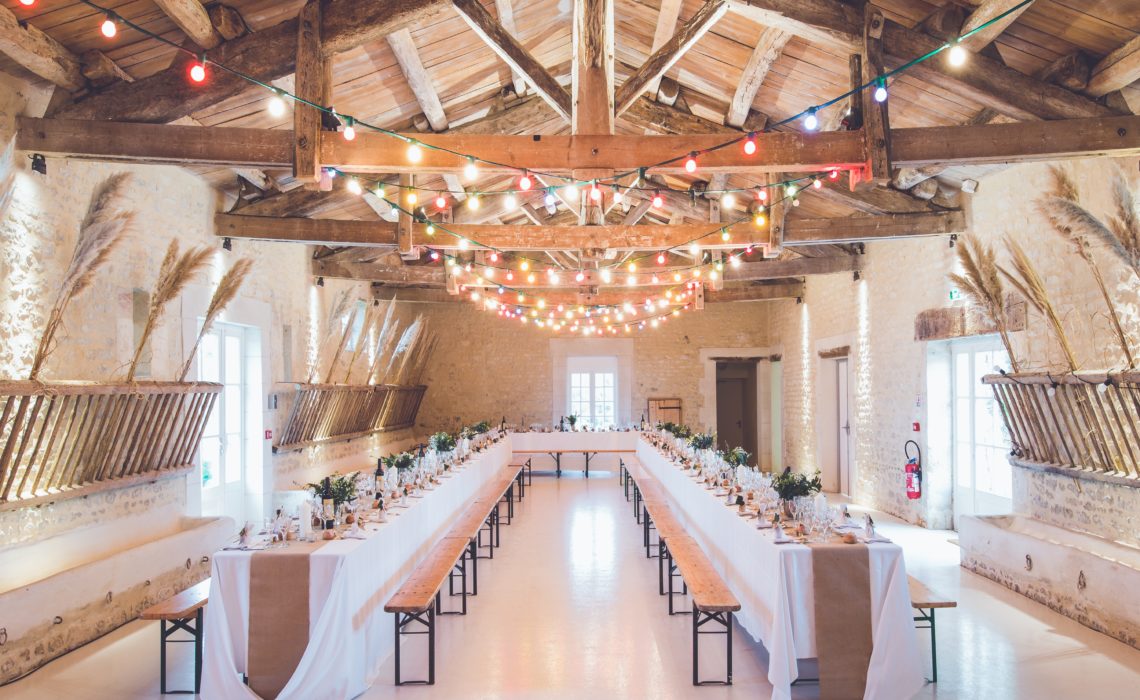Putting together a wedding reception seating chart can be a daunting task. When looking at your guest list, it can be impossible to imagine where to even start—so much so that you might be tempted to forgo a seating chart altogether. While it isn’t always necessary for a smaller reception, a seating chart will make the reception run a lot smoother, especially when a plated dinner service is involved.
It can be overwhelming at first, but creating the perfect seating chart can actually be a breeze. Follow these tips to put together your wedding seating chart expertly and efficiently.
Don’t Put it Off
The seating chart is probably one of the tasks you are least looking forward to, but that doesn’t mean you can keep putting it off until you are scrambling to get it together the night before your wedding. As you start receiving your RSVPs, start to do some of the preliminary work by putting your guest’s names into a spreadsheet—you’ll start expanding on it once you have your concrete guest list (more on this in a bit). You should aim towards having the seating charts finalized at least a week before the wedding, so that all you’ll need to worry about are last minute minor adjustments.
Figure Out Table Logistics
Before getting into the arrangements, you’ll need to know the logistics of the tables. Figure out the shapes and sizes, how many will fit in the event space, how they will be arranged, and how many people can comfortably be seated at each. These details need to be solidified before you can make any final seating decisions.
Decide on Your Head Table Arrangement
Figure out what you want to do for your head table arrangement. Many couples choose to do a sweetheart table with just the two of them, while others may want to be seated with their wedding party. Some decide to celebrate with their parents and close family. Once you know where you and your soon-to-be-spouse fit into the reception space, you can start making your way down your guest list.
Break Out the Spreadsheet
Once you have solidified who will be attending your wedding, you can start organizing on a spreadsheet. Make a list of all of your guests (and don’t forget plus ones!), and make note of their relationship to you as a couple—college roommates, friends of the groom’s parents, bride’s extended family, work friends, etc. It may help to color code to have a visual representation of how many people are in each group. These initial notes will help you start grouping people together and deciding who will sit with each other.
Start Grouping and Arranging
Now that you have begun to break up your guest list into groups, you can finally start arranging the seating chart. You can easily organize this on your spreadsheet by making columns with table numbers and filling them out with guest names. However, if you are more of a visual person, grab a large piece of paper, sticky notes, and pens. Draw out your floor plan with table numbers, and then write the names of your guests on the sticky notes so that you can start arranging the groups.
As you begin creating table groups and placing them in your floor plan, there will be some obvious groupings that will want to sit together: college friends who will love to reconnect, parents and their children, co-workers, and so on. However, as you go through your guest list, there are a few things you should keep in mind…
Avoid Drama
In a perfect world, your guests will all get along swimmingly without any drama. However, if you know of any tension between guests, keep the drama at bay by seating them away from each other. For the guests that you are less familiar with (such as friends of your parents), ask whoever knows them best for any helpful insight you should know before making any concrete decisions.
Keep in Mind Parent Dynamics
Traditionally, the parents of both the bride and the groom will be seated at the same table, along with siblings, grandparents, or other close family members. Of course, certain family dynamics don’t always fit with this arrangement. If one (or both) of the sets of parents are separated, consider placing them at different tables, along with their partners and family members. The parent table is typically placed closest to where the bride and groom are seated (if they are not sitting together), so if you are working with multiple parent tables, place them equidistant from where you are sitting.
Consider a Kid’s Table
If you have children attending that are old enough to sit on their own, consider creating a kid’s table. You can also incorporate age-appropriate activities to keep them entertained during the festivities. Keep in mind that you will still want to place this table in the line of sight of their parents. However, if you only have a couple of children attending, it will be best to simply sit them with their parents.
Be Mindful of Special Accommodations
Go through your guest list and think of ways to accommodate certain needs. For example, guests who use wheelchairs will need more maneuvering space, so place their seat on the outer edge of the event space. People who might be more sensitive to sound (such as older guests or parents with young children) will likely appreciate being placed away from the music or speakers so it isn’t too loud.
If you are in the process of planning your wedding, come to the next Georgia Bridal Show near you. You’ll be able to meet with a variety of professionals who can make your wedding day vision come to life!
Wedding professionals who want to meet future clients in Georgia and the Southeast can contact us about opportunities for exhibition and online marketing with Georgia Bridal Show.


